Welcome to the world of the Colosseum! This article will take you on a journey through the ages, unraveling the mysteries and wonders of this ancient amphitheater. Prepare to be amazed as we dive into the historical significance, architectural marvels, and memorable experiences that await you at the Colosseum.
Historical Background of the Colosseum
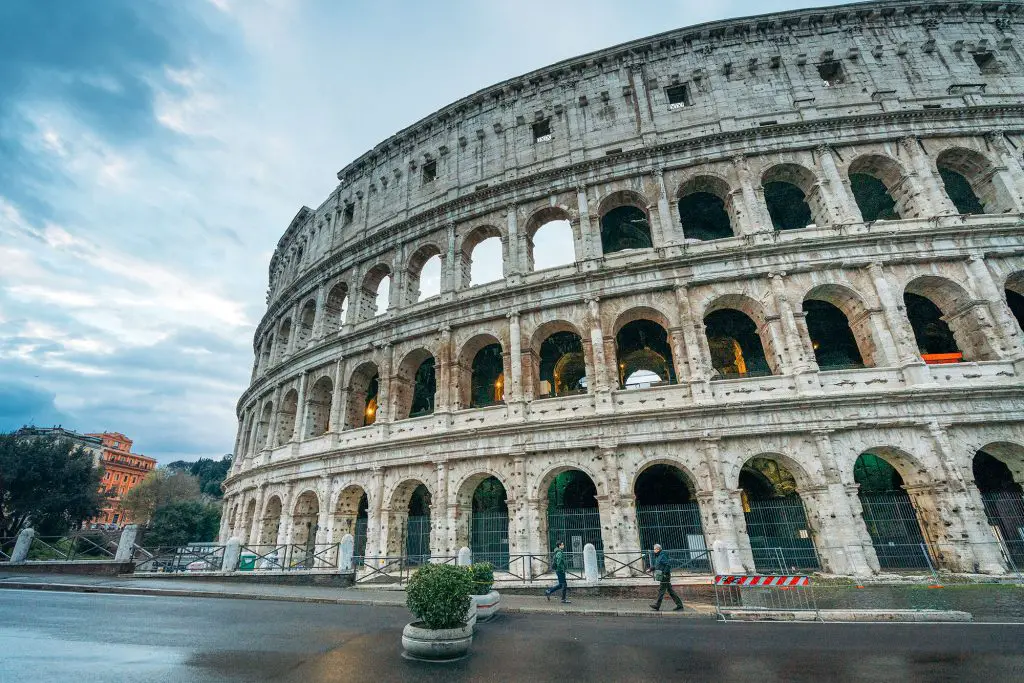
To truly appreciate the Colosseum, we must first understand its historical context. The construction of this magnificent structure began in 70 AD, under the reign of Emperor Vespasian, and was completed in 80 AD during the rule of his successor, Emperor Titus. The Colosseum was built as a grand gift to the people of Rome, showcasing the might and power of the Roman Empire.
The Colosseum stands as a testament to the glory of the Flavian dynasty, which witnessed the end of the tumultuous Year of the Four Emperors. Its construction marked a period of stability and unity for the Roman Empire, serving as a symbol of strength and grandeur.
Architectural Features of the Colosseum
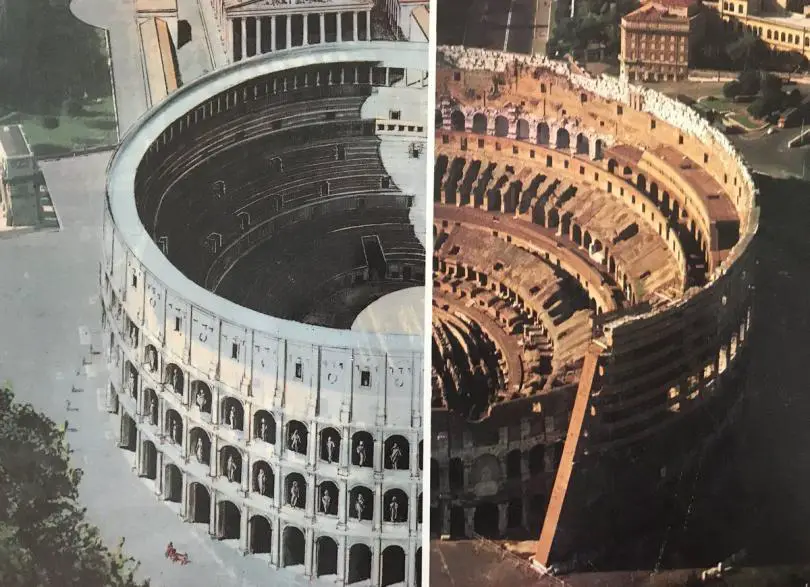
The Colosseum’s architectural brilliance lies in its innovative design and engineering. This elliptical amphitheater boasts a circumference of 527 meters, with an impressive height of 48 meters. Its outer facade features four levels of arches, each adorned with decorative elements, including statues and columns.
The Colosseum’s design incorporates the classical orders of architecture, with Doric on the ground level, Ionic on the second, and Corinthian on the third. This fusion of styles adds to the grandeur and aesthetic appeal of the structure. The Colosseum was ingeniously built using a combination of concrete, stone, and brick, showcasing the advanced engineering techniques of the time.
The Purpose and Function of the Colosseum
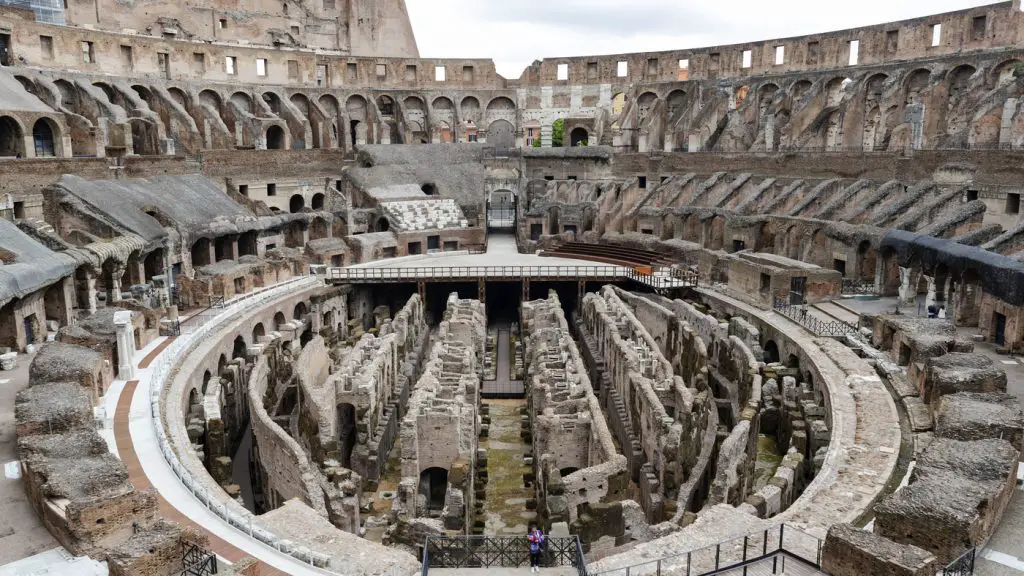
The Colosseum was primarily used for various forms of entertainment and served as a venue for public spectacles. Its grand arena played host to gladiator battles, animal hunts, mock naval battles, and theatrical performances. These events were meant to entertain the Roman populace and demonstrate the power and magnificence of the empire.
The amphitheater could accommodate up to 50,000 spectators, with separate seating areas for different social classes. The seating arrangement reflected the hierarchical structure of Roman society, with the privileged elite occupying the best spots closer to the arena, while the commoners were situated in the upper levels.
Gladiator Battles and Other Events
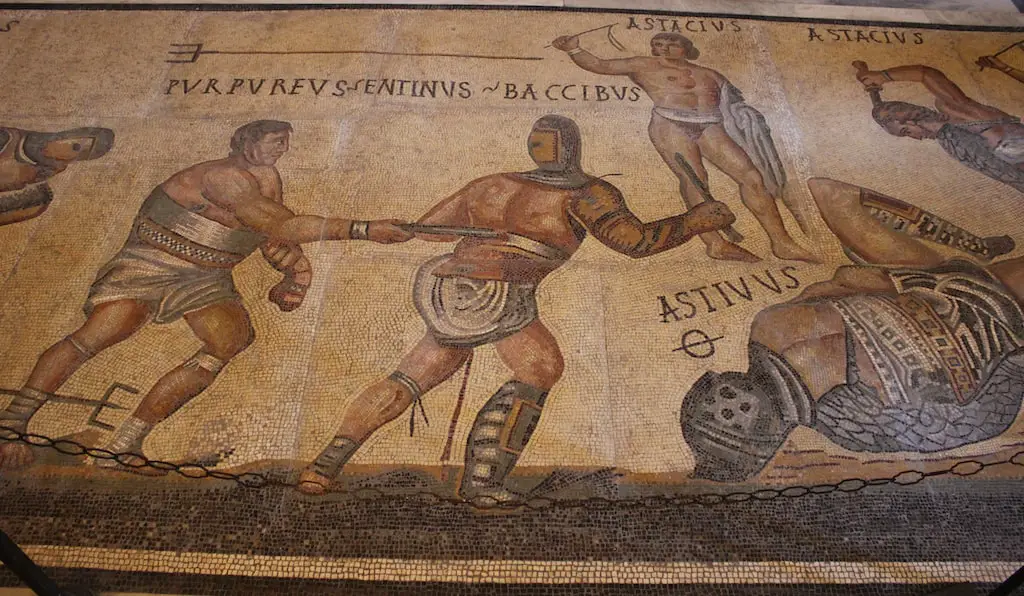
Gladiator battles were undoubtedly one of the most popular and thrilling events held at the Colosseum. These fights pitted trained fighters, often slaves or prisoners of war, against each other or against fierce animals. The battles were a display of skill, bravery, and the will to survive.
Other events held at the Colosseum included wild animal hunts, known as venationes, where exotic creatures from various parts of the empire were brought in for public spectacle. The Colosseum’s design even allowed for the flooding of the arena to stage naval battles, providing an awe-inspiring experience for the spectators.
Spectator Experience at the Colosseum
Imagine being part of the roaring crowd, eagerly awaiting the spectacle about to unfold before your eyes. As a spectator, you would have felt a surge of excitement and anticipation as the gladiators entered the arena. The atmosphere would have been electric, filled with the cheers and chants of the crowd, creating an unforgettable experience.
The Colosseum was designed to enhance the spectator’s experience. The seating arrangement, with its strategic placement and clear visibility, ensured that everyone had a good view of the action. The awnings, known as velaria, provided shade from the scorching sun, offering comfort during the long hours spent at the amphitheater.
Decline and Restoration of the Colosseum
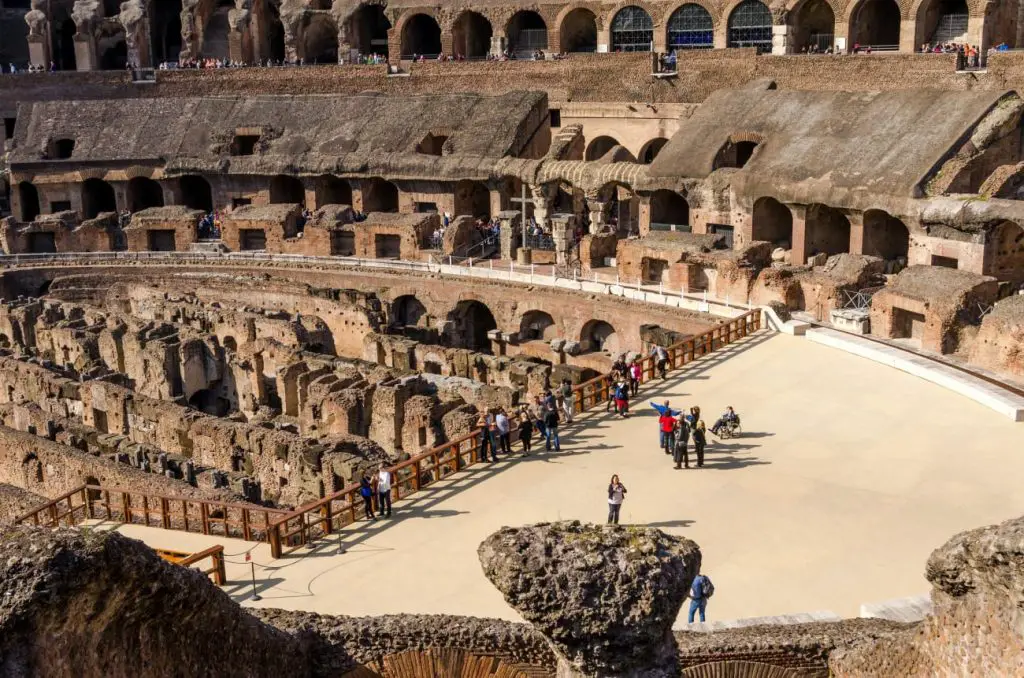
Over the centuries, the Colosseum suffered from neglect, natural disasters, and human interventions. It was used as a quarry for building materials, and its once magnificent structure fell into disrepair. However, in the modern era, efforts have been made to preserve and restore this historic landmark.
Extensive restoration work has taken place to safeguard the Colosseum’s structural integrity and revive its former glory. Today, visitors can witness the ongoing restoration efforts, which aim to protect this iconic symbol of ancient Rome for future generations to appreciate and admire.
Significance of the Colosseum Today
The Colosseum continues to be a symbol of Rome’s rich history and cultural heritage. It stands as a testament to the architectural prowess and engineering achievements of the ancient Romans. Today, the Colosseum is a UNESCO World Heritage site and attracts millions of visitors each year, who come to marvel at its grandeur and immerse themselves in its historical significance.
Beyond its historical importance, the Colosseum serves as a cultural hub, hosting exhibitions, concerts, and other events. It stands as a reminder of the enduring legacy of the Roman Empire and the impact it had on art, architecture, and society.
Exploring the Exterior of the Colosseum
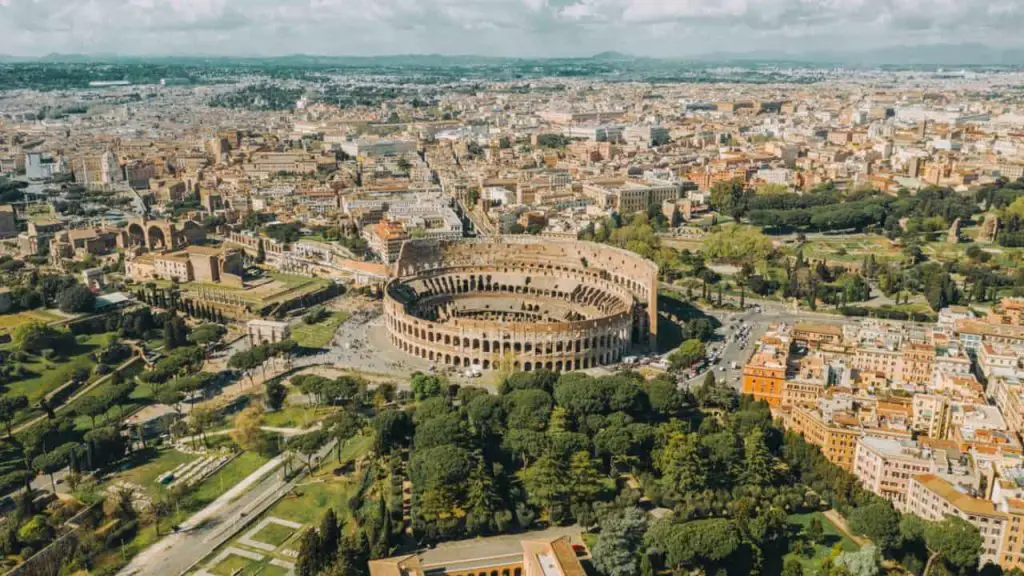
When you first approach the Colosseum, you will be awe-struck by its colossal size and grandeur. Take a moment to appreciate its majestic exterior, with its imposing arches and intricate details. Walk around the perimeter and observe the different levels, each telling a story of the events that unfolded within its walls.
As you explore the exterior, you can also capture stunning photographs from various angles, capturing the essence and beauty of this iconic structure. The surrounding area provides ample opportunities for memorable snapshots, allowing you to create lasting memories of your visit to the Colosseum.
Exploring the Interior of the Colosseum
Stepping inside the Colosseum is like stepping back in time. As you enter the arena floor, imagine the gladiators’ footsteps echoing through the corridors, the crowd’s cheers reverberating in your ears. Take a moment to absorb the history that envelops you and appreciate the sheer magnitude of the amphitheater.
As you explore the interior, climb the stairs to the higher levels, where you can witness breathtaking views of the surrounding area. Peer down into the arena, and let your imagination transport you to the ancient spectacles that took place in this very spot. Audio guides and informative displays will provide you with a deeper understanding of the Colosseum’s history and significance.
Fascinating Facts about the Colosseum

Here are some intriguing facts about the Colosseum that will deepen your appreciation for this historic monument:
1- The Colosseum could be flooded for mock naval battles, known as naumachiae.
2- It is estimated that over 500,000 people and a million animals lost their lives in the Colosseum’s spectacles.
3- The Colosseum’s underground chambers housed the gladiators and animals, providing an intricate network for their movement.
4- The Colosseum’s original name, the Flavian Amphitheatre, was derived from the Flavian dynasty of emperors.
5- The Colosseum has been featured in numerous films and serves as a popular backdrop for cinematic productions.
6- The Altare della Patria (“Altar of the Fatherland”) is a monument built in honor of the first king of a unified Italy and it located in Rome, Italy. The structure is 135 m wide and 70 m high. there are quadrigae and winged victories at the top of the roof. From the roof it is possible to have 360-degree views of Rome.
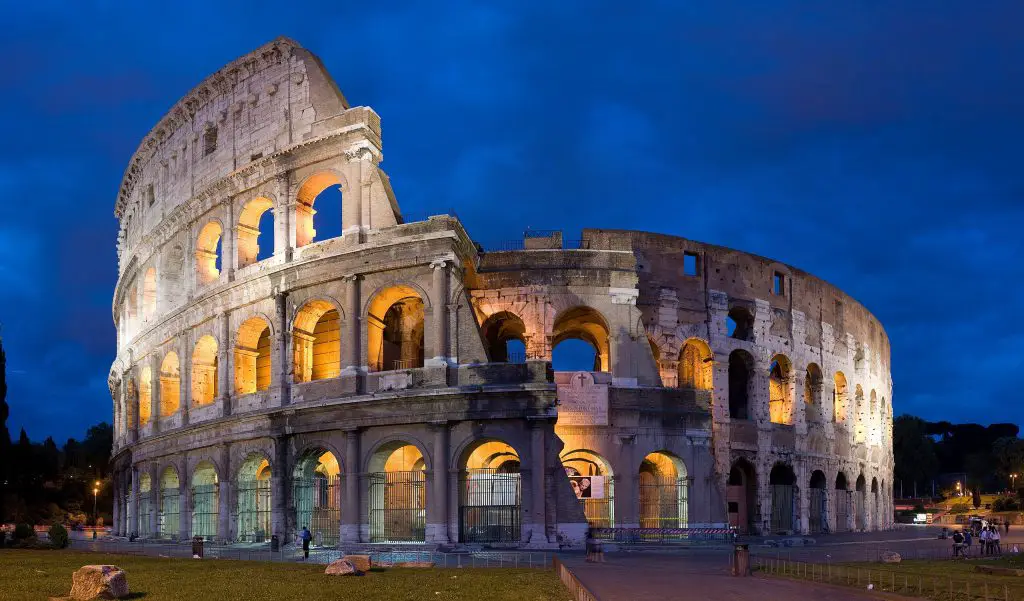
Conclusion
In conclusion, the Colosseum stands as a majestic testament to the grandeur of ancient Rome. Its historical significance, architectural brilliance, and immersive visitor experience make it a must-visit destination for history enthusiasts and travelers alike. Exploring the Colosseum allows you to step back in time and witness the glory and splendor of the Roman Empire.